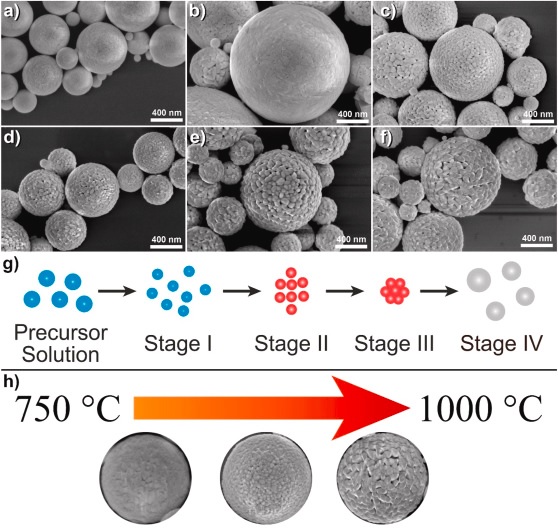Effect of temperature on ultrasonic spray pyrolysis method in zinc tungstate: the relationship between structural and optical properties.
SANTIAGO, Anderson A. G.; TRANQUILIN, Ricardo L.; SIU LI, Máximo; LONGO, Elson; MOTTA, Fabiana V.; BOMIO, Mauricio R. D.
SANTIAGO, Anderson A. G.; TRANQUILIN, Ricardo L.; SIU LI, Máximo; LONGO, Elson; MOTTA, Fabiana V.; BOMIO, Mauricio R. D.




 Abstract: Zinc tungstate is an inorganic material which shows immense potential in diverse areas such as photoluminescence, sodium-ion batteries, and catalysis. Thus, the synthesis and characterization of ZnWO4 by ultrasonic spray pyrolysis using different heat treatments (between 750 °C and 1000 °C) is reported herein. X-ray diffraction and Raman spectroscopy were used to confirm the formation of the ZnWO4 with wolframite-type monoclinic structure. Scanning electron microscopy images revealed that the ZnWO4 particles have a microsphere-like morphology formed by the junction of different nanocrystals and its surface changed by heat treatment. The bandgap energies had a small variation among the samples (3.88 eV-3.98 eV). The photoluminescence emission of the samples showed a broadband spectrum with white light, in which structural alterations occurred with the increase in the heat treatment, which also increased the emission intensity and broadband. The samples synthesized at 950 °C and 1000 °C showed to be promising warm- and neutral-white light emission sources.
Abstract: Zinc tungstate is an inorganic material which shows immense potential in diverse areas such as photoluminescence, sodium-ion batteries, and catalysis. Thus, the synthesis and characterization of ZnWO4 by ultrasonic spray pyrolysis using different heat treatments (between 750 °C and 1000 °C) is reported herein. X-ray diffraction and Raman spectroscopy were used to confirm the formation of the ZnWO4 with wolframite-type monoclinic structure. Scanning electron microscopy images revealed that the ZnWO4 particles have a microsphere-like morphology formed by the junction of different nanocrystals and its surface changed by heat treatment. The bandgap energies had a small variation among the samples (3.88 eV-3.98 eV). The photoluminescence emission of the samples showed a broadband spectrum with white light, in which structural alterations occurred with the increase in the heat treatment, which also increased the emission intensity and broadband. The samples synthesized at 950 °C and 1000 °C showed to be promising warm- and neutral-white light emission sources. @article={003009662,author = {SANTIAGO, Anderson A. G.; TRANQUILIN, Ricardo L.; SIU LI, Máximo; LONGO, Elson; MOTTA, Fabiana V.; BOMIO, Mauricio R. D.},title={Effect of temperature on ultrasonic spray pyrolysis method in zinc tungstate: the relationship between structural and optical properties},journal={Materials Chemistry and Physics},note={v. 258, p. 123991-1-123991-9},year={2021}}
@article={003009662,author = {SANTIAGO, Anderson A. G.; TRANQUILIN, Ricardo L.; SIU LI, Máximo; LONGO, Elson; MOTTA, Fabiana V.; BOMIO, Mauricio R. D.},title={Effect of temperature on ultrasonic spray pyrolysis method in zinc tungstate: the relationship between structural and optical properties},journal={Materials Chemistry and Physics},note={v. 258, p. 123991-1-123991-9},year={2021}}